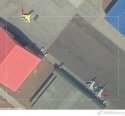antiterror13
Brigadier
Complete body could also refer to the "airframe" being in its final state, perhaps with a 6,000 rnd per minute gatling gun. To assume for whatever reason that implied the WS-15 would rolling out shortly on new build J-20's is utter nonsense... the WS-15 will need a prolonged developmental period very similar to the airframe in order to be considered ready for production..
To imply that the J-20 will go from the AL-31/WS/10, straight into the WS-15 is simply beyond the realm of possibility, it's just NOT done that way...
The pre-production WS-15 will be built and run extensively and exhaustively in a number of test cells, pushed to destruction. Then its torn down, analyzed, problems corrected, and run some more, a LOT more...
We have no evidence that the WS-15 is/has been run in this phase of testing, no doubt its been tested, possibly even tested to destruction? but we don't know that....
Now once that phase is mature, (yes test cell runs will continue for the forseeable future) the J-20 will have the inlets optimized for the WS-15, I'm about 99% percent certain the engine casing, possibly even the mounts are ready to go.. then and only then will we have any idea on the status of this project...
My best guess is that we are at least 5 years away from a WS-15 production standard engine installed in every new J-20
5 years away ... is a fair assessment, I agree

